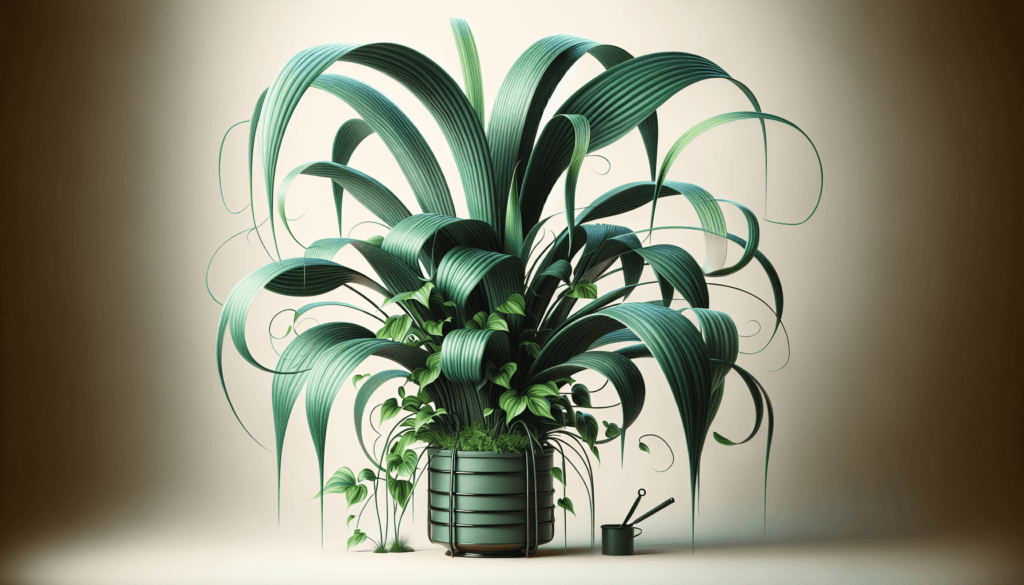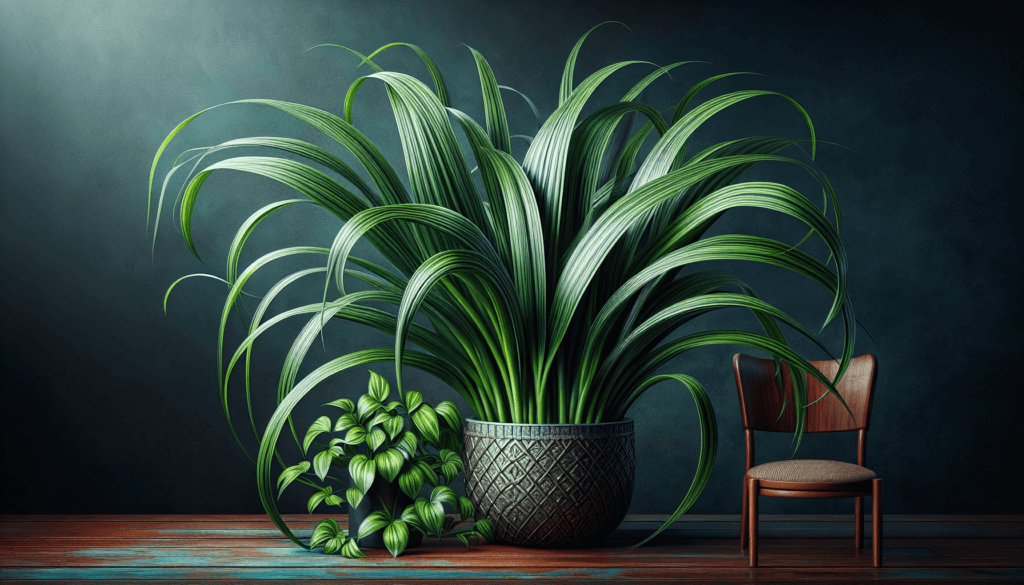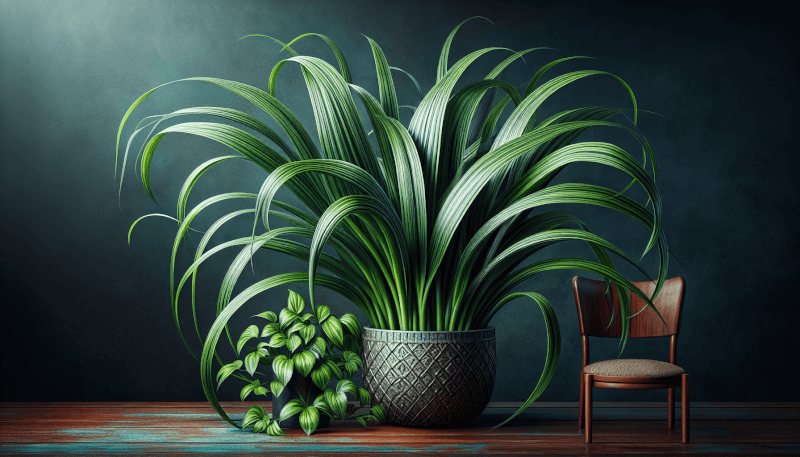Cane Plant Care is a comprehensive guide that provides you with all the essential information you need to keep your cane plant thriving. Whether you are a seasoned plant enthusiast or a beginner with a green thumb, this article has got you covered. From watering tips to the ideal amount of sunlight, we will share practical advice to ensure your cane plant stays healthy and vibrant. So, if you want to elevate your indoor gardening game and create a stunning botanical oasis in your home, read on to discover the secrets of successful cane plant care.

Choosing the Right Cane Plant
When it comes to choosing the right cane plant for your home or garden, it’s essential to do your research. There are numerous cane plant varieties available, each with its own unique characteristics and requirements. Take the time to explore different options and consider factors such as size, growth habit, and leaf appearance. By understanding the specific needs of each variety, you can ensure that you select a cane plant that will thrive in your specific environment.
Research Different Cane Plant Varieties
Before making a decision, take the time to research different cane plant varieties. This will allow you to compare their features and determine which ones align with your preferences and capabilities as a caretaker. Some popular cane plant varieties include Dracaena fragrans, Dracaena reflexa, and Dieffenbachia. Each variety has its own growth pattern, leaf shape, and overall appearance, so make sure to consider these factors when making your choice.
Consider Lighting Requirements
One of the most critical factors to consider when choosing a cane plant is lighting requirements. Cane plants generally prefer bright, indirect light. Placing them in a spot that receives filtered sunlight or in a room with plenty of bright, natural light is ideal. However, it’s important to note that direct sunlight can harm cane plants, causing sunburn or leaf scorch. Therefore, it’s best to avoid placing them in direct sunlight unless they are acclimated to it.
Evaluate Temperature and Humidity Needs
Temperature and humidity are crucial factors that can greatly affect the health and growth of your cane plant. Most cane plants thrive in temperatures ranging from 60-85°F (15-29°C). It’s important to avoid exposing them to extreme temperature fluctuations, as this can lead to stress and damage. Additionally, cane plants generally prefer a moderate to high humidity level. If the air in your home is dry, consider using a humidifier or placing trays of water near your plants to increase humidity.
Check Soil and Watering Preferences
Understanding the soil and watering preferences of cane plants is essential for their overall health and vitality. Cane plants prefer a well-draining soil mixture that allows excess water to flow through easily. Avoid using heavy or compacted soils, as this can lead to root rot and other complications. When it comes to watering, cane plants like to be evenly moist but not waterlogged. Allow the soil to dry slightly between waterings to prevent overwatering.
Lighting Conditions for Cane Plants
To properly care for your cane plant, it’s crucial to understand its lighting preferences. Cane plants typically thrive in bright, indirect light conditions. In their natural habitat, they grow under the canopy of larger trees, receiving filtered sunlight. When placing your cane plant indoors, try to replicate these conditions by choosing a location that receives plenty of bright, natural light. However, it’s important to avoid direct sunlight, as it can burn the leaves and cause damage.
Providing Adequate Brightness Levels
While cane plants prefer bright light, it’s essential to ensure that the brightness levels are appropriate. If the light is too dim, the leaves may become leggy and lose their vibrant green color. On the other hand, if the light is too intense, the leaves may develop brown spots or scorch marks. A good practice is to place your cane plant about 4-6 feet away from a window that receives bright, indirect light. This will provide the optimum brightness level for healthy growth.
Avoiding Direct Sunlight
Direct sunlight can be harmful to cane plants, causing the leaves to burn or develop unsightly brown patches. It’s crucial to protect your cane plant from direct sunlight, especially during the hottest parts of the day. If you notice that your cane plant is receiving direct sunlight, move it to a location where it can enjoy filtered or indirect light. This will prevent any potential damage and ensure that your plant continues to thrive.
Utilizing Artificial Lighting if Necessary
In some cases, natural light may not be sufficient for your cane plant’s needs. If you notice that your plant is struggling or not growing as well as expected, you can consider supplementing its lighting with artificial sources. LED grow lights are an excellent option, as they provide the right spectrum and intensity of light for plant growth. Position the lights above your cane plant and adjust the height as the plant grows. This will help ensure that your cane plant receives adequate light for optimal growth.
Optimal Temperature and Humidity
Temperature and humidity play a crucial role in the overall health and well-being of your cane plant. It’s important to provide the ideal temperature range and maintain appropriate humidity levels to prevent stress and promote healthy growth.
Determining Ideal Temperature Range
Cane plants thrive in temperatures ranging from 60-85°F (15-29°C). It’s essential to keep your cane plant in an environment where the temperature remains within this range. Avoid exposing your plant to extreme temperature fluctuations, such as drafts from doors or windows, as this can cause stress and hinder growth. Consider the natural habitat of cane plants, which is typically found in tropical regions, and try to replicate those conditions as closely as possible.
Managing Temperature Fluctuations
While it’s best to maintain a consistent temperature for your cane plant, occasional fluctuations can be tolerated as long as they are not extreme. Avoid placing your cane plant near vents, air conditioning units, or drafty areas, as these can result in temperature fluctuations. If you notice significant temperature changes in your home, consider using curtains or blinds to regulate the temperature around your cane plant and provide a more stable environment.
Balancing Humidity Levels
Humidity is another crucial factor to consider when caring for cane plants. Most varieties prefer moderate to high humidity levels, as they are native to tropical regions. If the air in your home is dry, especially during the winter months, the humidity levels may drop below what cane plants prefer. To increase humidity, you can utilize a humidifier in the room where your cane plant is located. Alternatively, placing trays of water near your plants can help increase humidity as the water evaporates.
Utilizing Humidifiers or Trays of Water
Humidifiers are an excellent tool for increasing humidity levels around your cane plant. They release moisture into the air, creating a more favorable environment for your plant. Place the humidifier near your plant, ensuring that it emits a gentle mist without directly spraying the leaves. Alternatively, you can fill trays with water and place them near your plant. As the water evaporates, it will increase the humidity in the surrounding area and benefit your cane plant.
Watering Techniques for Cane Plants
Proper watering techniques are vital for the health and well-being of your cane plant. Understanding the watering frequency and determining adequate soil moisture is key to preventing overwatering or underwatering.
Knowing the Watering Frequency
Cane plants generally prefer to be evenly moist but not waterlogged. Avoid letting the soil dry out completely between waterings, as this can lead to stress and damage to the plant. On the other hand, overwatering can suffocate the roots and cause root rot. A good rule of thumb is to water your cane plant when the top inch of soil feels slightly dry to the touch. Insert your finger into the soil to check the moisture level and adjust your watering schedule accordingly.
Determining Adequate Soil Moisture
To ensure that you are watering your cane plant appropriately, it’s essential to determine the adequate soil moisture. Stick your finger about an inch into the soil and check if it feels slightly moist. If the soil feels overly wet or waterlogged, hold off on watering until it dries out a bit. If the soil feels dry, it’s time to water your plant. By paying attention to the moisture level of the soil, you can ensure that your cane plant is receiving the proper amount of water.
Avoiding Overwatering
Overwatering is one of the most common mistakes when it comes to caring for cane plants. It can lead to root rot, suffocate the roots, and cause the leaves to turn yellow or brown. To avoid overwatering, make sure that the soil has adequate drainage. Choose a well-draining soil mixture and ensure that your pot has drainage holes. When watering, allow the water to flow through the soil and out of the drainage holes, removing any excess water that may collect in the saucer.
Preventing Underwatering
While overwatering can be detrimental, underwatering can also cause stress and harm to your cane plant. It’s important to establish a watering routine and consistently check the moisture level of the soil to prevent underwatering. If the soil feels dry to the touch, it’s time to water your plant. Ensure that you water thoroughly, allowing the water to penetrate through the soil and reach the roots. This will ensure that your cane plant receives adequate moisture for healthy growth.
Soil Conditions and Fertilization
The soil conditions and fertilization routine greatly impact the growth and health of your cane plant. Understanding the soil preferences, choosing the right soil mixtures, and implementing balanced fertilization practices are key to promoting optimal growth.
Understanding Cane Plant’s Soil Preferences
Cane plants prefer a well-draining soil mixture that allows excess water to flow through easily. They do not thrive in heavy or compacted soils, which can inhibit root growth and lead to waterlogged conditions. When selecting soil for your cane plant, look for a mixture specifically formulated for houseplants or tropical plants. These mixtures typically contain a blend of organic matter, perlite, and vermiculite to provide an ideal texture and drainage.
Choosing Well-draining Soil Mixtures
When choosing soil mixtures for your cane plants, opt for those that are well-draining. These mixtures prevent water from pooling around the roots and promote healthy root development. Look for potting mixes that contain a combination of organic matter, such as peat moss or coconut coir, and materials like perlite or vermiculite. These ingredients improve soil aeration and drainage, ensuring that excess water does not accumulate around the roots.
Amending Soil with Organic Matter
Organic matter is beneficial for cane plants as it helps improve soil structure and nutrient availability. Adding organic matter to the soil can help retain moisture, promote beneficial microbial activity, and enhance overall plant health. You can amend the soil by mixing in compost or well-rotted manure during repotting or by applying organic fertilizers throughout the growing season. This will provide your cane plant with the necessary nutrients and contribute to the long-term health of the soil.
Implementing Balanced Fertilization
While cane plants can thrive without heavy fertilization, providing balanced nutrition is important for their growth and vitality. Opt for a well-balanced, water-soluble fertilizer formulated specifically for indoor plants. Follow the package instructions for dosage and application frequency, being careful not to exceed the recommended amounts. Over-fertilization can cause salt buildup in the soil, leading to root damage and nutrient imbalances. Regular, light fertilization throughout the growing season will ensure your cane plant receives the nutrients it needs without overfeeding.
Pruning and Propagation
Pruning is an essential part of cane plant care, as it helps maintain the plant’s shape, remove dead or dying leaves, and promote bushier growth. Additionally, cane plants can be propagated through stem cuttings, allowing you to expand your collection or share your plants with others.
Removing Dead or Dying Leaves
Regularly inspect your cane plant for dead or dying leaves and promptly remove them. Dead leaves can attract pests and diseases, and removing them helps maintain the plant’s overall health and appearance. Use clean, sharp pruners or scissors to make clean cuts at the base of the leaf stem or where it connects to the main stem. After removing dead leaves, dispose of them properly to prevent any potential spread of pests or diseases.
Trimming Overgrown or Leggy Stems
Cane plants can sometimes become overgrown or develop leggy stems with sparse foliage. To maintain a compact and bushy shape, it’s important to trim back the overgrown stems. Choose a healthy stem and use sharp pruning shears to make a clean cut just above a leaf node. This will encourage new growth and help your cane plant maintain a balanced appearance. After pruning, you can propagate the pruned stems to create new plants, expanding your cane plant collection.
Propagation through Stem Cuttings
Cane plants are relatively easy to propagate through stem cuttings. Select a healthy stem and use a sharp knife or scissors to make a clean cut just below a leaf node. Remove any lower leaves to expose the nodes along the stem. Fill a small pot with well-draining soil, create a hole with your finger, and insert the cutting into the hole. Gently press the soil around the cutting to secure it in place. Place the pot in a warm location with bright, indirect light and keep the soil moist but not waterlogged. Within a few weeks, the cutting should develop roots and start to grow.
Promoting Bushier Growth
To promote bushier growth in your cane plant, you can prune and pinch back the stems regularly. When pruning, make clean cuts just above a leaf node to encourage new growth. Additionally, you can pinch back the growing tips of the stems by using your fingertips or sharp pruning shears. Pinching back the tips will stimulate branching and result in a bushier appearance. By maintaining a regular pruning and pinching routine, you can help your cane plant develop a lush, full-bodied shape.
Managing Pests and Diseases
Like any houseplant, cane plants are susceptible to pests and diseases. It’s important to be vigilant and implement preventive measures to keep your cane plant healthy and free from infestations.

Identifying Common Pests for Cane Plants
Some common pests that can affect cane plants include spider mites, mealybugs, and scale insects. Spider mites are tiny pests that often appear as tiny dots on the leaves and create fine webs. Mealybugs are small, white, soft-bodied insects that cluster in leaf axils, leaf undersides, or along the stem. Scale insects are small, round or oval-shaped pests that attach to the leaves and stems, often appearing as small bumps or shells. Regularly inspect your cane plant for any signs of pests and take appropriate action to prevent infestation.
Implementing Natural Pest Control Methods
When it comes to controlling pests on your cane plants, it’s best to start with natural methods before resorting to chemical treatments. One effective method is to use a mild soap and water solution and spray it directly on the affected areas. This can help remove pests and their eggs from the leaves and stems. Another natural option is to introduce beneficial insects, such as ladybugs or predatory mites, which can help control pest populations. Neem oil is another organic solution that can be effective against a variety of pests. Always follow the instructions and guidelines when using any pest control method.
Preventing Common Diseases
Preventing common diseases is key to maintaining the health and vitality of your cane plant. Avoid overwatering, as it can lead to root rot and other fungal infections. Ensure that your cane plant receives adequate air circulation, as stagnant air can contribute to the development of diseases. Regularly inspect your plant for any signs of disease, such as leaf discoloration, spots, or wilting, and promptly address any issues that arise.
Treating and Controlling Infections
If your cane plant does develop a disease or infection, it’s important to take immediate action to prevent further spread and damage. Identify the specific disease or infection and determine the appropriate treatment method. Fungal infections can often be controlled by adjusting the watering routine and improving air circulation. Some diseases may require the use of fungicides or other chemical treatments, but it’s advisable to consult with a professional or local garden center for guidance on the best course of action.
Monitoring and Troubleshooting
Regular observation and monitoring of your cane plant’s health are essential for catching any issues early on and addressing them promptly.
Regular Observation of Plant Health
Make it a habit to regularly observe and inspect your cane plant for any changes in appearance, growth, or health. Check the leaves for discoloration, spots, or wilting, and inspect the stems for any signs of damage or pests. By regularly monitoring your cane plant, you can address any issues that arise quickly and prevent them from escalating.
Recognizing Signs of Stress or Imbalance
It’s crucial to be able to recognize signs of stress or imbalance in your cane plant. Common signs of stress include yellowing leaves, brown spots, wilting, or leggy growth. If you notice any of these symptoms, it’s important to assess the care routine, including watering, lighting, and humidity levels, to identify any potential causes. By addressing the underlying issue and restoring balance to your cane plant’s care routine, you can help it recover and thrive.
Addressing Yellowing or Browning Leaves
Yellowing or browning leaves can indicate a variety of issues, including overwatering, underwatering, nutrient deficiencies, or pest infestations. Assess the watering routine and adjust it accordingly if the soil is too wet or too dry. Consider fertilizing your cane plant with a balanced, water-soluble fertilizer to address any nutrient deficiencies. If you suspect a pest infestation, implement appropriate pest control measures. Regularly remove any damaged or dead leaves to promote overall plant health.
Adjusting Care Routine as Needed
If you notice any signs of stress or imbalance in your cane plant, it’s important to adjust the care routine accordingly. This may involve modifying the watering frequency, changing the lighting conditions, or adjusting the humidity levels. By being responsive and making necessary changes, you can ensure that your cane plant receives the optimal care it needs to thrive.
Supporting Cane Plant Growth
Supporting your cane plant’s growth is essential for maintaining its shape, preventing damage, and promoting overall health.
Using Stakes or Trellises
If your cane plant has long, vining stems, it may benefit from the support of stakes or trellises. These structures can help prevent the stems from bending or drooping under their weight and provide support as the plant grows taller. Position the stakes or trellises near the base of the plant and tie the stems gently to them using soft plant ties or twine. This will help keep your cane plant upright and promote a more aesthetically pleasing appearance.
Tying Up Vines or Canes
As your cane plant grows and develops, it may produce long vines or canes. To maintain a tidy appearance and prevent the stems from sprawling, tie them up using soft plant ties or twine. Gently secure the vines or canes to stakes or trellises, ensuring that they are not constricted or tightly bound. Regularly inspect the tied-up stems and adjust the ties as needed to accommodate the growth of your cane plant.
Providing Support for Weak Stems
If you notice any weak or floppy stems on your cane plant, they may benefit from additional support. Use soft plant ties or twine to gently secure the weak stems to stakes or trellises. This will help them stand upright and prevent any further bending or drooping. By providing support for weak stems, you can help your cane plant maintain its shape and prevent damage from occurring.
Promoting Upright Growth
To encourage upright growth in your cane plant, make sure it receives adequate light from all sides. Rotate your plant periodically to ensure even exposure to light and prevent it from leaning towards one direction. Additionally, pruning and pinching back the stems can help promote bushier growth and improve overall plant structure. By promoting upright growth, you can help your cane plant develop a balanced and aesthetically pleasing form.
Decorative Display and Arrangements
Cane plants make excellent decorative additions to any indoor space, and there are various ways to enhance their visual impact in your home or garden.
Choosing Suitable Planters or Containers
When selecting a planter or container for your cane plant, consider both functionality and aesthetics. Choose a pot that has sufficient drainage holes to prevent water from pooling around the roots. Additionally, consider the size and shape of the pot, ensuring that it provides enough room for the roots to grow. Opt for a pot that complements the style and décor of your space, whether it be a classic terracotta pot, a modern ceramic planter, or a decorative woven basket.
Complementing Cane Plant with Complementary Plants
To create an aesthetically pleasing display, consider complementing your cane plant with other plants. Choose plants that have similar light and humidity requirements to ensure compatibility. Select plants with varying heights, textures, and leaf shapes to create visual interest and dimension. For example, pairing your cane plant with a trailing plant like a pothos or a compact fern can add a lush, layered look to your display.
Arranging Plants to Create Visual Interest
When arranging your cane plant and other complementary plants, consider the principles of design to create a visually appealing display. Place taller plants in the back or center, and shorter plants or cascading vines towards the front or edges. Arrange the plants in a way that allows each one to be seen and appreciated individually while still creating a cohesive and harmonious overall arrangement.
Maintaining an Aesthetically Pleasing Display
To maintain an aesthetically pleasing display, regular care and maintenance are essential. Remove any yellowing or dead leaves, prune back overgrown stems, and clean the foliage with a soft, damp cloth to remove dust. Inspect the plants regularly for any signs of pests or diseases and take appropriate action if necessary. By consistently caring for and maintaining your cane plant display, you can ensure that it remains visually appealing and enhances the ambiance of your space.
In conclusion, choosing the right cane plant, understanding its lighting, temperature, and humidity preferences, checking soil conditions and watering techniques, pruning and propagating, managing pests and diseases, monitoring and troubleshooting, supporting growth, and creating decorative displays are all crucial aspects of caring for cane plants. By following these guidelines and providing the necessary care, you can create a vibrant and healthy environment for your cane plants, allowing them to thrive and bring beauty into your home or garden. Happy gardening!


